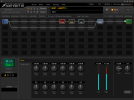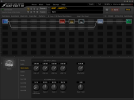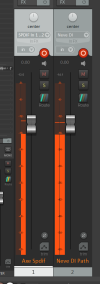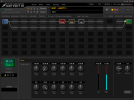Orvillain
Power User

I'm running into the front of my Axe3 - so instrument input 1. This patch splits input 1 to an amp chain, and then dry goes straight through to the mixer. Amp chain panned left, dry signal panned right.
Input 1 is not going into the red zone on the front of the unit at all.

But it is clipping at the output 2 block. Bigly. I don't understand why.
Here's how things are setup:


Honestly, I'm still a bit confused how to capture a DI through the Axe FX III, when not using it as a USB soundcard. Just trying to capture a unity gain copy of input 1 to a dedicated track in my DAW to be honest!


